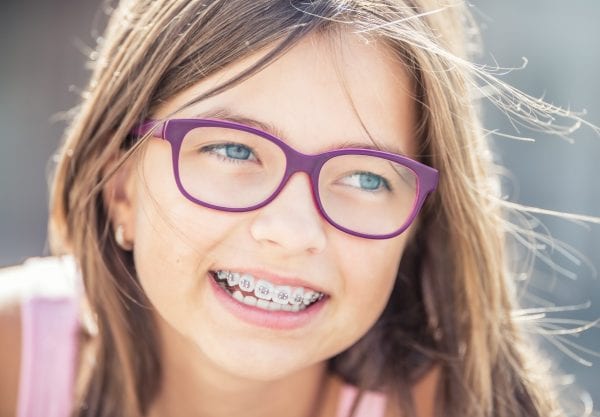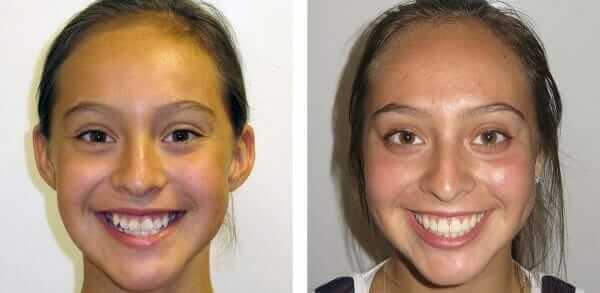How Damon Braces Differ From Traditional Braces
When it comes to choosing braces, teens and children have more options than they did in the past. At Burke & Redford Orthodontists, patients can choose from a variety of braces options, including self-ligation braces (such as Damon braces and GC Experience braces), lingual braces, metal braces, and ceramic braces (sometimes known as clear braces).
In this article, we will look at how modern self-ligating braces differ from traditional braces. Many types of braces effectively straighten crooked teeth, close gaps, and correct bite issues (malocclusions), but there are some distinct advantages that make self-ligating braces an attractive option.
Self-Ligating Braces
Before discussing how Damon braces differ from traditional braces, it is important to understand that the Damon braces system is a brand name for a type of self-ligating braces. Another popular brand name in self-ligating braces is GC Experience braces.
The differences between self-ligating braces and traditional braces apply to almost any type of self-ligating braces—whether it is the Damon or GC Experience brand. This means you could substitute the terms “GC Experience” for “Damon” or “self-ligating” for “Damon” throughout this article. For ease of discussion, however, we will simply use the term “Damon braces” for the remainder of this article.

Damon Braces vs Traditional Braces Design
The single biggest difference between Damon braces and traditional braces is the design of the bracket. However, before explaining how the bracket differs, it might help to review the three main components of braces.
- Brackets: small pieces of metal or ceramic that are bonded to the teeth with dental adhesive.
- Archwires: the thin, continuous strand of wire that passes through each bracket. The archwires help to move the teeth into the correct positions.
- Elastics: small rubber bands that extend from upper to lower brackets and are used to apply pressure to help align the top and bottom teeth and correct the bite.
Additional parts of braces may include molar bands, headgear tubes, hooks, springs, and coils. However, the brackets, archwires, and elastics are the primary parts of braces.
Traditional braces use elastic ligatures to secure the archwire to each individual bracket. How the elastic ligatures are tied determines how much force is applied to the tooth and which direction they will move the teeth. Different types of ligatures include single elastic ligatures, connected elastic ligatures (also called power chains or c-chain ligatures), and wire ligatures.
Self-ligating braces (like Damon braces) do not require the use of elastic ligatures. Instead, self-ligating braces use a door, slide, or clip mechanism to connect the archwires and the brackets. Although elastic ligatures are not used in self-ligating braces, they can be placed if the patient would like to do so for decorative purposes.

Damon Braces vs Traditional Braces Time
One of the advantages of Damon braces over traditional braces is that patients have shorter appointments because the elastic ligatures do not need to be changed out. You may also have longer intervals between adjustment appointments.
As far as overall treatment time, this will depend on the specific ortho needs of a patient. More complex cases require longer treatment times than simpler cases. Most studies have demonstrated treatment times with Damon braces and traditional braces are often similar, despite claims of faster treatment time by many Damon doctors. In reality, the length of treatment is dependent on the treatment plan and individual biological variation, not the type of braces used.
Damon Braces vs Traditional Braces Cost
Treatment fees will depend on a patient’s geographical location and the specific treatment needed. More severe malocclusions or requiring more correction will have higher treatment costs.
Our office provides patients with a treatment plan and a quote for the total financial investment after a complimentary orthodontic consultation. During this consultation, our doctors will discuss all treatment options and an advised treatment plan (including price). Our office works with PPO insurance providers to ensure everyone gets the maximum benefits. We also offer a variety of payment plans to fit each patient’s budget.
Damon Braces vs Traditional Braces Appearance
Without the need for elastic ligatures, Damon braces can be “less colorful” than their traditional counterparts, which are often customized with colorful elastics chosen by the wearer. For many children and teenagers, choosing the colors for the elastics is the fun part of wearing braces. The self-ligating braces used in our practice can accommodate colored ties for decoration if the patient prefers.
Many kids enjoy customizing their braces with their school colors or the colors of their favorite sports team. For some, the orthodontic experience is incomplete with the chance to customize braces with colorful elastics. However, other patients prefer the more discreet appearance of Damon braces without colored ties and with white coated archwires.
Options for Damon Braces
Although traditional braces are typically made of metal alloys, the Damon system can be either metal or ceramic. Many people prefer ceramic braces (sometimes known as “clear braces”) because they are less noticeable.
With ceramic braces, the bracket is made of tooth-colored ceramic, which blends in better with the teeth. When paired with white archwires, Damon Clear braces are almost invisible—making them a great option for youth or adults who prefer to downplay the fact that they are wearing braces.

Other Braces Options
In addition to traditional metal braces and metal self-ligating braces (such as Damon and GC Experience braces), you may also consider lingual braces. These types of braces are placed on the back of the teeth—making them virtually invisible. However, lingual braces are more expensive, can result in speech impediments, require longer adjustment appointments, and often have longer total treatment times. Many patients also find lingual braces to be quite uncomfortable to the tongue.
Conclusion
The good news is that any type of children’s braces can be effective at correcting bites and straightening teeth when those braces are used in the right hands. Braces are simply a tool. The results that are achieved in treatment are dependent on the skill level of the doctor and staff. Beware of practices or doctors “selling” a brand of braces or technique that include claims which sound too good to be true.
The best child orthodontist will work with each family to find a treatment plan (including type of braces) that best fits the patient’s orthodontic needs, cosmetic requirements, and budget. With hundreds of 5-star reviews and offices in Temecula and Lake Elsinore, Burke & Redford Orthodontists have been shaping beautiful smiles in Riverside County since 1991.
Call our office at (951) 699-8011 to schedule a free orthodontic consultation today or click on the “Schedule a Free Consultation” on our website.